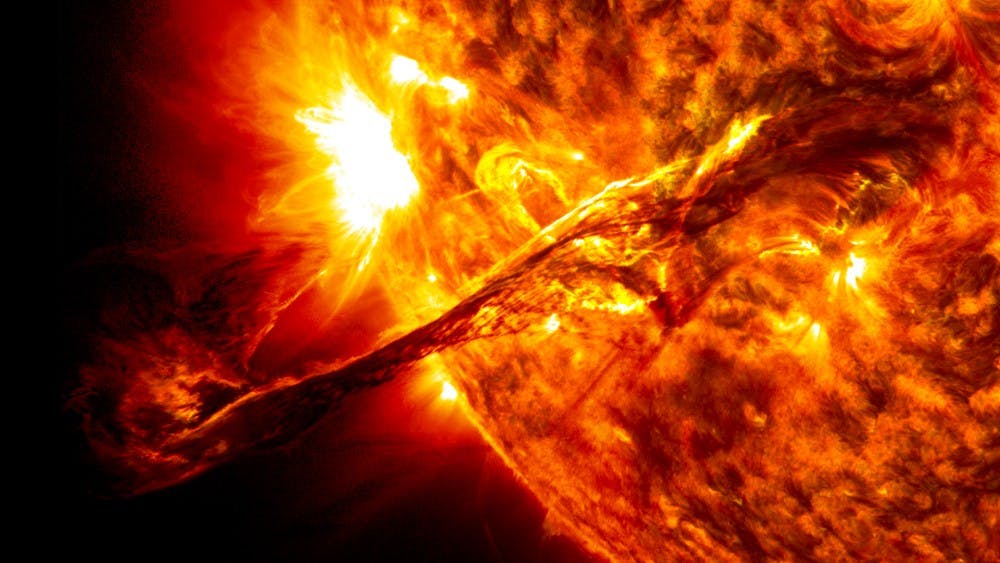By RAYYAN JOKHAI
For The News-Letter
Theoretical physicists working at Imperial College London (ICL) have developed a laser-based heating method through which they believe particular materials can be rapidly heated to temperatures hotter than those in the center of the sun — 10 million Kelvin — in only 20 quadrillionths of a second.
This heating method could prove valuable in fields like thermonuclear fusion energy, as scientists working in this area have long awaited a mechanism to reproduce the sun’s ability to produce clean energy.
The closest existing heating system to this new discovery is located in the Lawrence Livermore National Laboratory in California. The heating rate of this alternative is 100 times slower than that of the newly proposed method. However, the mechanism of the theoretical physicists still resides in theory, and it is up to other researchers to try and put it into practice.
The idea that high-power lasers can heat materials is not new — scientists have used this for years. In the past decade, researchers have been experimenting with this idea in order to create thermonuclear fusion energy. Fusion energy comes from fusion reactions, which occur when two light atomic nuclei combine to form a heavier nucleus through intense heat and pressure. This results in some mass being converted to energy.
The challenge that has stumped researchers for years is that in order to actually harness energy from thermonuclear fusion, the energy output must be greater than the energy input. In other words, there must be a net gain in energy. This is very difficult to achieve, given that it is not an easy task to heat materials to temperatures comparable to the center of the sun.
In their paper published in Nature Communications, ICL physicists took a novel approach to the problem as they sought to focus more directly on ions. Ions make up the bulk of matter, so by heating these ions alone, the physicists believed they would be able to more quickly add energy to the entire material.
In previous methods, lasers were targeted at the material, but the energy first had to go through the electrons in the target material. Only then would the ions be heated, subsequently heating the entire matter. By bypassing the target material’s electrons, the physicists discovered a way to more rapidly increase the energy of the material.
The research team at ICL realized that when a high-power laser is fired at a material, an electrostatic shock wave is created. This electrostatic shock wave can be used to directly heat ions, rather than going through the slow process of first heating the electrons.
In most scenarios, the electrostatic shock wave pushes the ions away, accelerating them rather than actually heating them. However, using supercomputer modeling, the theoretical physicists discovered that if the material used has two ions types, like plastics, the acceleration of each type of ion would be different. This causes friction between the ions, which rapidly heat the material.
Due to the density of materials with two ion types, the various ions act like matches rubbing against a box to create energy within the material. The electrostatic shock wave accelerates the ions, which are then squeezed together more tightly than they are at their standard states. The heating mechanism, however, can only be used in materials that are relatively dense at a standard state because if the ions are not close enough to begin with, the frictional effect cannot be achieved. Thus, the heating method is ineffective in a gas.
While still purely theoretical at this stage, if the theory is proven true by experiments, scientists could develop the fastest-ever heating method to have ever been demonstrated in a lab. Now that the theoreticians have made this discovery, experimental physicists are racing to quickly unlock the potential of this new heating method.





